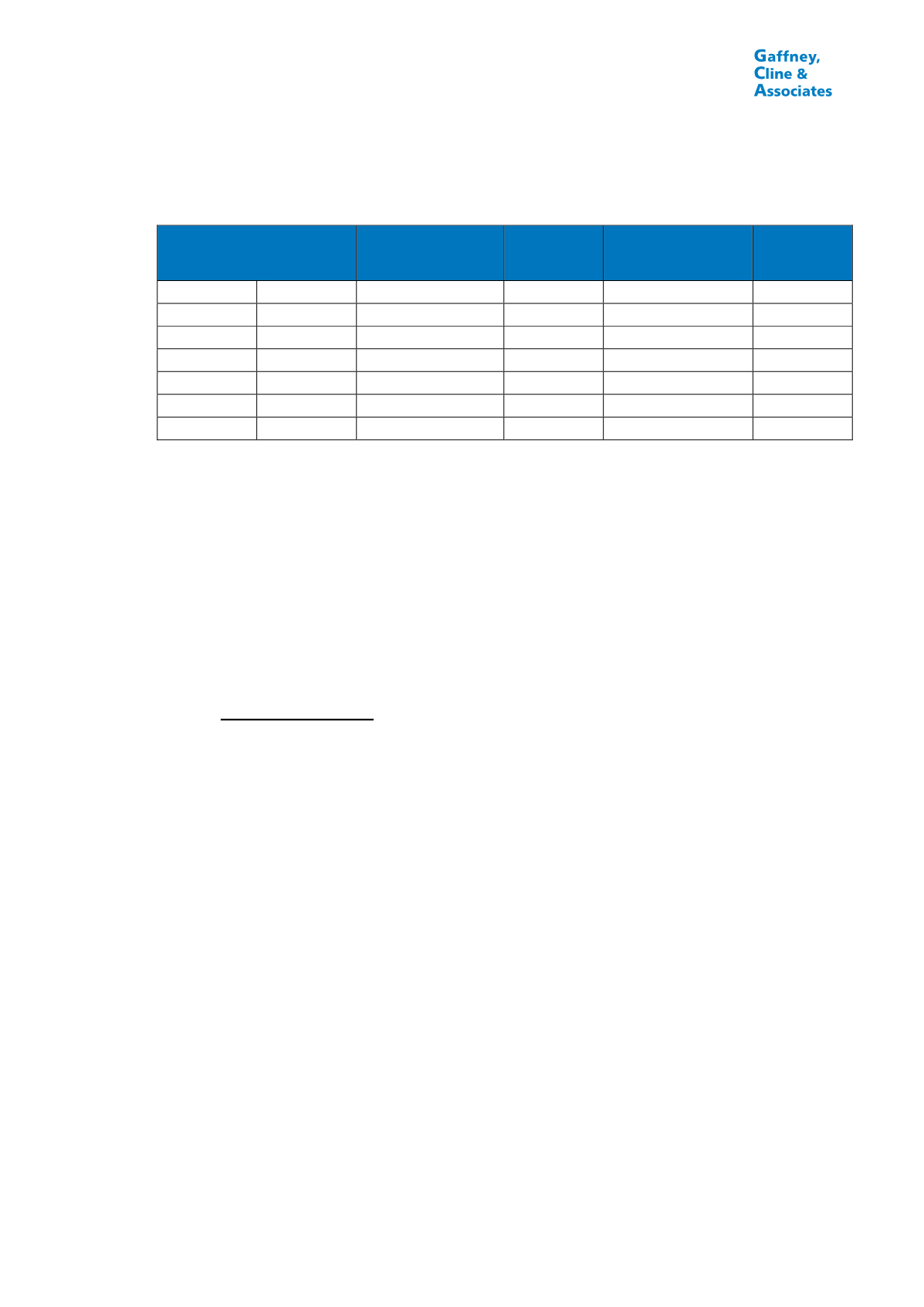
Kuwait Energy
EL-12-211107
87
TABLE 6.11
SUMMARY OF OIL PROSPECTIVE RESOURCES (LEADS)
AS AT 31
st
MAY, 2014: BLOCK 82 (YEMEN)
Lead
Gross
Best Estimate
(MMBbl)
KE WI (%)
Net to KE
Best Estimate
(MMBbl)
GCoS (%)
1
Qishn
3.1
21.25
0.7
10
2
Qishn
4.4
21.25
0.9
10
3
Qishn
3.6
21.25
0.8
14
4
Qishn
6.7
21.25
1.4
14
5
Qishn
8.1
21.25
1.7
12
6
Qishn
47.6
21.25
10.1
10
7
Qishn
5.4
21.25
1.1
14
Notes:
1.
Gross Prospective Resources are 100% of the volumes estimated to be recoverable from the Lead
in the event that a discovery is made and subsequently developed.
2.
KE Net Prospective Resources in this table are KE’s Working Interest fraction of the Gross
Prospective Resources; they do not represent KE’s actual Net Entitlement under the terms of the
PSC that governs the asset, which would be lower.
3.
The GCoS reported here represents an indicative estimate of the probability that drilling this Lead
would result in a discovery.
4.
The volumes reported here are “unrisked” in the sense that no adjustment has been made for
geological or commercial risk, i.e. the risk that no discovery will be made or that any discovery would
not be developed.
5.
Prospective Resources should not be aggregated with each other, or with Reserves or Contingent
Resources, because of the different levels of risk involved.
6.6
Pakistan: Jherruck
The Jherruck Block has already been introduced in Section 5 of this report. It lies in the
Lower or Southern Indus Basin in southern Pakistan. As noted in Section 5, there are
numerous oil and gas discoveries and several productive fields to the east of Jherruck
(Figure 5.1) and the first well drilled on the Block, Jherruck B-1, found gas but the
maximum production rate achieved in testing was too low to be considered commercial.
The main productive reservoir across the Southern Indus Basin is the early Cretaceous,
Lower Goru Formation. The best reservoir potential occurs within shallow marine sands,
including shoreface facies, in the basal section of the Lower Goru. Open marine shelf
sandstones are also present, but reservoir potential is expected to decrease westwards
as the sediments become more argillaceous in the deeper offshore. The shoreface
sediments are broadly linear features running approximately N-S over much of the
Southern Indus Basin. The overlying Upper Goru Formation is composed of muddy
limestones and appears to act as an efficient seal.
Other proven reservoirs in the Lower Indus Basin are the inter-bedded, marine sands of
the late Jurassic to early Cretaceous, Upper Sembar Formation and the marine shelf
limestones of the middle Jurassic, Chiltan Formation. Figure 6.5 shows a representative
stratigraphic column. The burial depth of the reservoir section increases across the
Lower Indus Basin from west to east.


